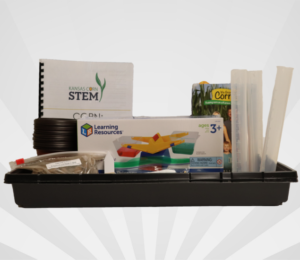Free Classroom Kit
Corn: Staying Alive!
Grade Level: 3rd Grade
 Students propose ideas about what they think plants need to grow, and specifically what corn plants need to germinate and grow. They tackle the challenge their teacher sets before them to prove their ideas with evidence, coming up with ideas themselves about how to do that. They use their imaginations to think clearly in planning their investigations and making predictions, and they carry out the investigations over the course of several days or a few weeks. During that time, they observe carefully and record their data accurately by drawing and writing. Afterward, they examine their findings, and are able explain to their teacher and peers what corn plants need to germinate and grow based on their evidence. They reflect on whether their ideas have changed based on their evidence, and how scientists often have to change their ideas based on evidence, too.
Students propose ideas about what they think plants need to grow, and specifically what corn plants need to germinate and grow. They tackle the challenge their teacher sets before them to prove their ideas with evidence, coming up with ideas themselves about how to do that. They use their imaginations to think clearly in planning their investigations and making predictions, and they carry out the investigations over the course of several days or a few weeks. During that time, they observe carefully and record their data accurately by drawing and writing. Afterward, they examine their findings, and are able explain to their teacher and peers what corn plants need to germinate and grow based on their evidence. They reflect on whether their ideas have changed based on their evidence, and how scientists often have to change their ideas based on evidence, too.
Quick Links
About Kansas Corn STEM
Investing in Kansas teachers and students is a priority for the Kansas Corn Commission. We are committed to providing materials and training to support STEM education while fostering an understanding of how corn farming and agriculture fit into our daily lives. All K-5 lessons come with a free teacher kit that includes the teaching materials needed for each lesson.
Request MaterialsThis lesson is the work product of the Kansas Corn Commission. Our lessons are written in collaboration with Kansas teachers for use in the classroom. Teachers may copy and share this curriculum. Use of this product for commercial or promotional use is prohibited without express permission of Kansas Corn.
Newsletter Sign Up
Each quarter we release a newsletter written by teachers for teachers. This is an easy way to keep up with what is happening at Kansas Corn STEM.
Subscribe Today!